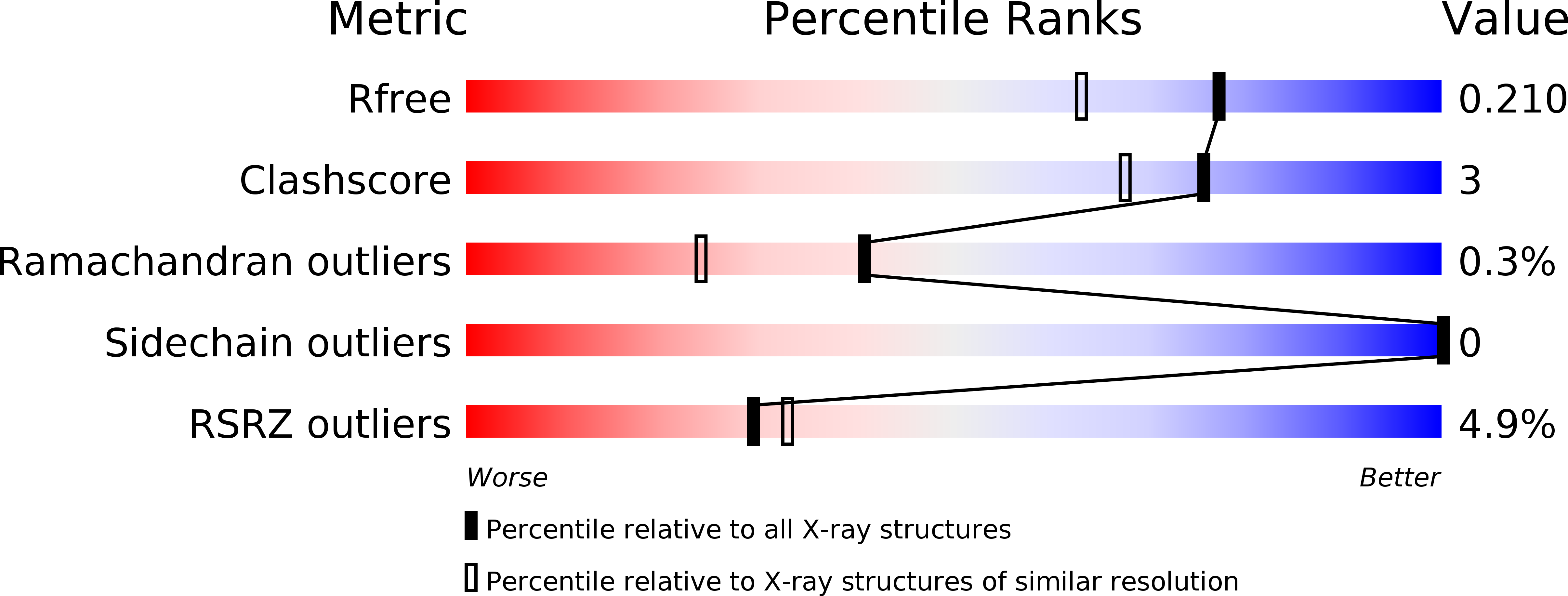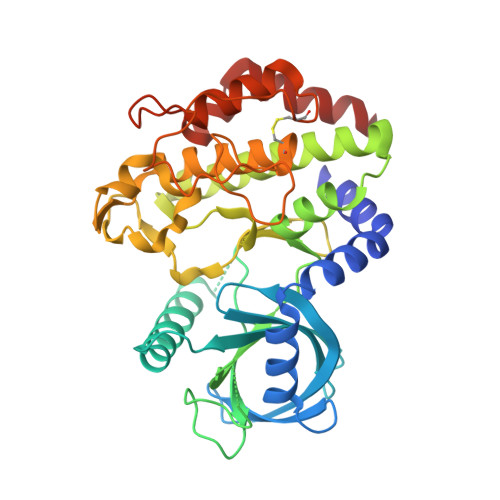A conserved non-canonical motif in the pseudoactive site of the ROP5 pseudokinase domain mediates its effect on Toxoplasma virulence.
Reese, M.L., Boothroyd, J.C.(2011) J Biol Chem 286: 29366-29375
- PubMed: 21708941
- DOI: https://doi.org/10.1074/jbc.M111.253435
- Primary Citation of Related Structures:
3Q5Z, 3Q60 - PubMed Abstract:
The ROP5 family is a closely related set of polymorphic pseudokinases that are critical to the ability of Toxoplasma to cause disease. Polymorphisms in ROP5 also make it a major determinant of strain-specific differences in virulence. ROP5 possesses all of the major kinase motifs required for catalysis except for a substitution at the catalytic Asp. We show that this substitution in the catalytic loop of ROP5 is part of a motif conserved in other pseudokinases of both Toxoplasma and human origin, and that this motif is required for the full activity in vivo of ROP5. This suggests evolutionary selection at this site for a biochemical function, rather than simple drift away from catalysis. We present the crystal structures of a virulent isoform of ROP5 both in its ATP-bound and -unbound states and have demonstrated that despite maintaining the canonical ATP-binding motifs, ROP5 binds ATP in a distorted conformation mediated by unusual magnesium coordination sites that would not be predicted from the primary sequence. In addition, we have mapped the polymorphisms spread throughout the primary sequence of ROP5 to two major surfaces, including the activation segment of ROP5. This suggests that the pseudoactive site of this class of pseudokinases may have evolved to use the canonical ATP-binding motifs for non-catalytic signaling through allostery.
Organizational Affiliation:
Department of Microbiology and Immunology, Stanford University School of Medicine, Stanford, California 94305-5124.

















